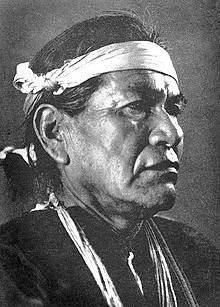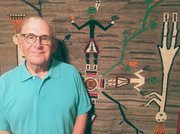As a physician, Howard Cockrill hasn't been able to heal himself.
He's "afflicted" by the collecting "disease" -- has been for at least 30 years -- and the only thing slowing down its progression is what he calls a "glass ceiling." He's so far into his habit that he has to spring financially for the really good stuff -- and it's harder and harder to come by.
FAQ
Cockrill Presentation
WHEN — 5 p.m. Saturday
WHERE — Museum of Native American History, 202 SW “O” St. in Bentonville
COST — Free
INFO — monah.com
BONUS — Howard Cockrill will speak.
"The world is divided into two categories," he says with dry humor. "Those who collect, and those who don't."
Cockrill, retired from his career as a radiologist in Little Rock, remembers the exact moment when the bug bit him.
"The family was coming back from a vacation floating the Colorado River, traveling through the Navajo reservations, and we stopped at a trading post," he says. "A peculiar looking weaving caught my eye -- a ceremonial weaving depicting a medicine man trying to heal members of the tribe. The images just captured my fancy, and as kind of an impulse buy, I bought it.
"That led to me starting to study what the rug was about and the healing ceremonies that they have, and since I was a physician, it all sort of appealed to me."
The more Cockrill learned, the more he wanted to know -- and the more he wanted to collect the unusual crafts.
"It led to a 30-plus year journey my wife and I have taken, looking for more of the same type of rugs," he says. "We've met all sorts of people and been to all sorts of interesting places. I befriended some of the old Navajo traders who had trading posts back in the early days, when trading posts were vital to those that lived on the reservations. They in turn introduced me to Indians doing the weavings I liked.
"The hunt is almost as much fun as the acquisition," he admits. "Some of the most fun was earlier when I just looking for good-looking stuff, going to funky little trading posts and corners of the reservation."
Eventually, though, Cockrill focused on the most rare and esteemed of the ceremonial rugs he favored, rugs created by an artisan and healer named Hosteen Klah. Born in 1867 in New Mexico, Klah learned to weave from his Hopi grandfather and learned the chants and ceremonies of a medicine man when he was just a boy. Among those rituals was sand painting, creating a complex design of images representing supernatural holy people and other symbols of the religious world on a dirt floor by sifting colored sand through the fingers of the medicine man. According to American Indian lore, the Holy People, attracted by their likenesses in the design, flow into the "picture," giving the sand painting its special power.
"It was Hosteen Klah's skills as a medicine man and talent as a weaver that inspired him to reproduce a full sandpainting design within a rug," says Charlotte Buchanan-Yale, director of the Museum of Native American History in Bentonville. "He was to be the FIRST to do so."
Klah's work became so popular, he couldn't keep up with demand and so well known it was exhibited in 1941 at the Museum of Modern Art in New York City. Cockrill says Klah probably wove around 2,000 rugs, and two-thirds of them are in museum collections. The rest are in private hands -- and in both instances they are often stored instead of exhibited because of the fragile nature of textiles. He says he wants people to see and enjoy what he's invested his time and money in finding -- as long as it doesn't damage the rugs.
That's why the Dr. Howard and Catherine Cockrill Collection has loaned several pieces to the Museum of Native American History, and this weekend he'll be on hand to share his latest acquisition, "Angled Corn With Holy People: Nightway Ceremony," an 8-foot by 8-foot Klah weaving from the 1930s. Purchased from a museum in Northern Arizona, the piece is fully documented -- and "rare and historic in its own right."
It may or may not have been the cure for Cockrill's collecting, however.
"Who knows? Maybe after I lick my financial wounds.. I still love to look at all of them ..."
NAN What's Up on 07/08/2016


